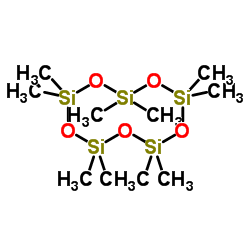This is why EXPLORATORY claims aren't actually science itself. When your only method is to ask people what products they use, if they feel sad, angry, or have a disease, and then correlating the product you wanted to target to the malady, it is easy to understand why during COVID-19 disease epidemiologists had a difficult time getting traction - they had never stood up to the cranks at Harvard School of Public Health and National Institute of Environmental Health Sciences using food surveys to try and scare people about everything.
Epidemiology is the basis for a new exploratory paper which claims that siloxanes, which help to create shiny, smooth hair, are increased if you straighten or curl your hair, and that might have health implications.

Scared of this image? I can narrow the list of media corporations you read, I can hone in on your food preferences, and certainly how you vote.
The experiment is fine for what it is. They set up a tiny house and had people style their hair while they measured cyclic volatile methyl siloxanes using mass spectrometry. Unsurprisingly, they increased. Higher temperatures caused higher amounts, as did more hair. So cut your hair short and don't curl it? Or...what? If I tell you your chances of winning the lottery are 1 in 235,000,000 but if you give me money it will drop to 1 in 234,000,000, you aren't giving me money.
Yet if I claim that spending more for a product that does not contain something will increase your chances of not getting a disease, with no relative risk included, a whole lot of people who buy organic food, supplements, and alternatives to medicine will spend more. In the case of California, the government will force poor people to spend more, with no health or environmental benefit.
The presence of a pathogen does not mean pathology, except on an IARC Working Group where they exist to scare everyone about everything. In the real world, of science and natural laws, the dose makes the poison. The volatile organic compounds they're detecting in higher quantity still can't harm you unless are are styling your hair 140 times per day for 300 years. And are a rat.
The authors are so intent on scaring the public they say you can't even open a window, because then you are releasing it into the atmosphere where it does...what? Decamethylcyclopentasiloxane(D5) they cite specifically doesn't do much at all and is gone in 5 or 6 days, unless the whole planet spends all their days - wait, nights, because nature makes it nearly 300 percent more prevalent at night - heating up their hair.
This will be fodder for the activists who are against cosmetics but isn't really informing the public about hazard or risk. It is just suggesting a potential hazard in rats in any amount is risky. That's a way to troll for an expert witness contract from a trial lawyer, not science.




Comments